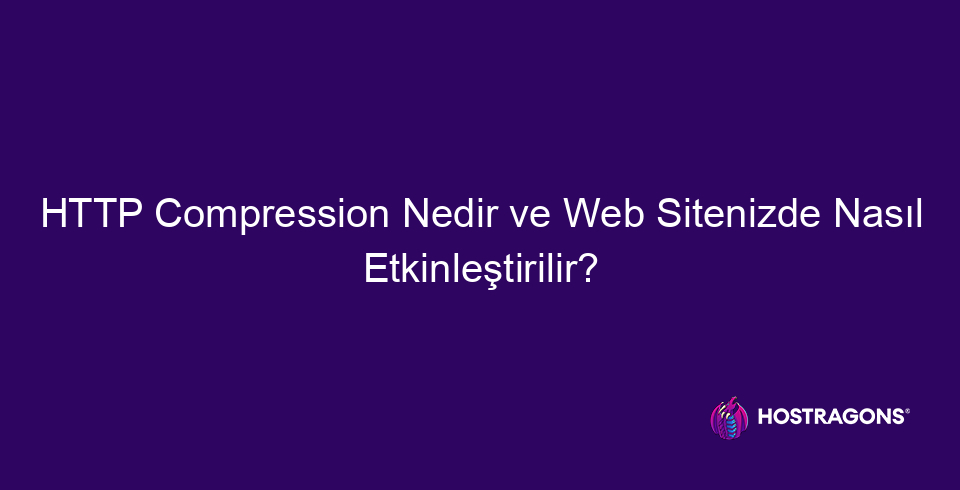Free 1-Year Domain Offer with WordPress GO Service

This blog post takes a deep dive into HTTP Compression, a critical way to improve your website’s performance. It explains the basics of what HTTP Compression is, how it works, and why you should use it. It covers the steps to enable HTTP Compression, settings for different server types, and common misconceptions. It also provides warnings about bad practices and performance analysis methods. It highlights the key points to consider when using HTTP Compression to speed up your website, and shows how this technique can improve your website’s user experience.
What is HTTP Compression? Understand the Basics
HTTP Compressionis a technique that allows your web server and browsers to exchange data in smaller sizes. This process compresses the size of files sent from the server (HTML, CSS, JavaScript, etc.), allowing them to reach the browser faster. Essentially, by reducing bandwidth usage during data transfer, it significantly shortens the loading time of your website. This improves the user experience and increases your SEO performance.
HTTP Compressionis the process by which a web server compresses HTTP responses before sending them to the client (usually a web browser). The client takes the compressed response and decompresses it before displaying it in the browser. This compression process reduces the amount of data, so web pages load faster. This is especially important for mobile devices and slow internet connections. In addition to improving performance, it also reduces the load on the server.
- HTTP Compression Basics
- Reduces data transfer size.
- Increases website loading speed.
- Reduces bandwidth usage.
- Improves user experience.
- It positively affects SEO performance.
- Reduces server load.
HTTP Compression‘ın temel amacı, web sitelerinin performansını optimize etmektir. Sıkıştırma algoritmaları sayesinde, dosyalar daha küçük boyutlarda transfer edilir ve bu da sayfa yüklenme sürelerini kısaltır. Örneğin, bir HTML dosyasının boyutu sıkıştırma ile %70’e kadar azaltılabilir. Bu durum, özellikle çok sayıda görsel ve betik içeren web siteleri için büyük bir avantaj sağlar. Kullanıcılar, daha hızlı yüklenen sayfalarda daha uzun süre kalır ve bu da dönüşüm oranlarını artırır.
| Compression Method | Explanation | Supported File Types |
|---|---|---|
| Gzip | It is the most widely used compression method. | HTML, CSS, JavaScript, Text files |
| Brotli | It offers higher compression ratios than Gzip. | HTML, CSS, JavaScript, Text files |
| Deflate | It is a compression method similar to Gzip. | Various file types |
| Compress | It is an older compression method and is not used much today. | Text files |
HTTP CompressionIt is important to configure your compression settings correctly. Incorrect configurations can negatively impact the performance of your website. For example, in some cases, compression can consume unnecessary server resources or cause browser incompatibilities. Therefore, it is important to configure your compression settings carefully and test them regularly.
How Does HTTP Compression Work? Technical Specifications
HTTP Compressionis a technique for improving website performance by reducing the amount of data transferred between the web server and the browser. This process involves the server compressing web pages, style sheets, and other assets before sending them to the browser. After receiving this compressed data, the browser automatically decompresses it and displays it to the user. This reduces the bandwidth required for data transfer and
More information: Learn more about HTTP Compression


Leave a Reply